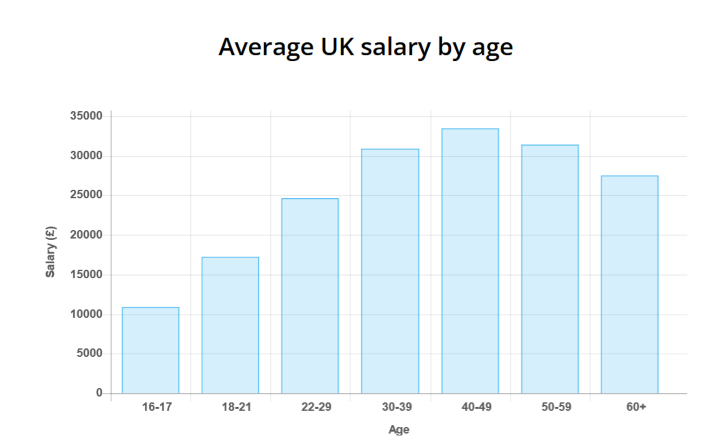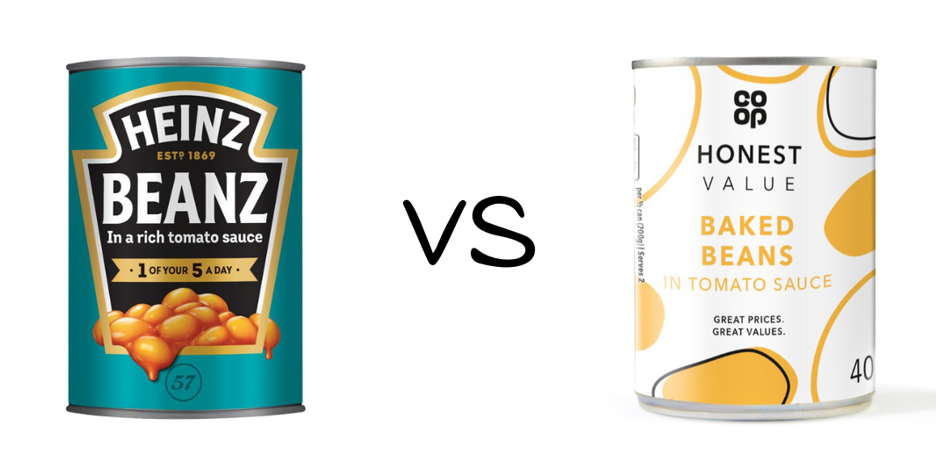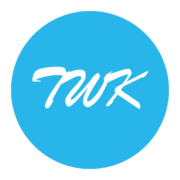Finding Your Target Audience
In this lesson we are going to look at finding your target audience – who is the person that wants your product/service?
I will explain to you what a target audience is and why we should target an individual.
We will then start to create our persona looking at four key areas – (Demographics, Geographics, Psychographics and Behavioural)
If you’re ready let’s get to it.
What is a Target Audience?
When you start a business you are eager to get eyes on your new venture, it is easy to assume that you need to target anyone and everyone to look at your new business and your target audience will sort itself out – but that would be wrong – you need to find that individual person who is interested in your product or service.
This person is screaming out for your business and is highly likely to become a paying customer.
If You Target Everyone – You’ll End Up Selling To No-one
The problem with targeting everyone is your content will be confusing as it’s not going to be targeted to anyone in particular – one day 26 year old David thinks he’s found the perfect solution to his problems then suddenly your message will be more appealing to 55 year old Susan.
It’s vitally important that you market to someone and to do this you need to create a ‘Customer Persona’.
Now that’s all well and good but how does a brand new business with no website or social media metrics know who their target audience is?
The answer is…. you have to do a bit of detective work – which means a bit of digging around with your side kick Google and using some reasonable assumption.
Target an Individual
A good tip is to target a specific individual.
This is super important advice because typically businesses target a range of person like men aged 25-45 or women aged 45-60+, realistically your target audience is just one individual – who is the one individual that consumes the highest percentage of your business?
Once we find out who this person is, their age, their interests/dislikes and a whole range of other demographics our marketing strategy gets easier – we will then know which language to use in our marketing and what message we need to get across.
You’re probably now thinking but if we target just one individual we’re going to miss out on everyone else, but that just doesn’t happen because your content still solves an overall problem that exists within your niche – we’re just zeroing-in on the bullseye, which is the specific individual that’s always there – our ideal customer.
The outer red,blue and black rings are your secondary markets – these are the people you thought you’d be losing, but they still get to see and hear your message – our main focus is who is it that sits in the yellow area.

Know Your Why?
Before we get to the good stuff and start digging through Google to create our customer persona, we need to start with ourselves and ask what is our why for creating the product/service.
The why for me in creating Seas of Solitude is:
“to research and provide luxe solo travellers with the best tips for luxury travel”
Always remember your why!
Creating Your Persona
There are four areas in which we need to look at when creating a ‘Customer Persona’ and these are:
- Demographics (grouping customers by identifiable non-character traits such as gender, age, or income.)
- Geographics (grouping customers with regards to their physical location)
- Psychographics (grouping customers based on their personalities and interests, beliefs, hobbies and life goals)
- Behavioural (grouping customers based of their actions like spending habits, browsing habits and brand engagements)
Let’s look at each of these in more detail.
We’ll start with the easier one out of the four and that’s demographics – which looks at:
- Age
- Gender
- Occupation
- Income
Start by asking yourself these questions:
What is the typical age range of your target audience?
Are you targeting teenagers, young adults, middle-aged individuals or seniors?
Is your product or service more likely to be used by males, females or both?
Occupation:
What is your target audiences profession?
Income:
What is the average income of your target customers?
Are they high earners, middle-income or on a budget?
These simple eight questions are a great starting point when looking at demographics.
Being a brand new business and not yet having a following means we have no social media or email metrics to look at – our best approach as we gather this data is to use Google and some reasonable assumption.
Checking The Stats
There are loads of travel experts out there with tons of travel blogs – with all that interest in travel someone would have been collecting travel data, let’s see what we can find to help us start building our customer persona.
By searching Google for ‘solo travel statistics’ I can find out some great demographics information regarding my niche.
- solo travel has been trending upwards since 2016 with a percentage growth of 131% for the search term ‘solo travel’
- women are leading men as solo travellers with a whopping 84% booking rate
- there’s been a 42% increase in solo traveller bookings over the last couple of years
- 55% of ‘solo travel’ Google searches have been women who are millennials (birth years 1981-1996)
- women are likely to take three trips a year
- 65% of women have solo travelled without their partner
- 58% of millennials travel alone vs 47% of older generations
- 86% of solo travellers are aged over 35 years old
- the average solo traveller age is 47 years old
- the gender split between women and men solo travellers is 84% women vs 16% men
- 12% of 18-24 year olds have had a solo trip
- the main reason for solo travel is people want to see the world and don’t want to wait for others (77% of <55 + 64% >55)
- the typical spend of a solo traveller is between $1000-$2000 a week
As you can see from the stats above we have some really good information and it didn’t take too long to find.
Let’s go back and answer our demographic questions.
Age:
Q. What is the typical age range of your target audience?
A. We can see that the average solo travellers age is 47 years old – so, we are targeting middle-aged individuals.
Gender:
Q. Is your product or service more likely to be used by males, females or both?
A. Looking at the stats it is more likely that a female will buy our product or service over males, that’s not to say males wouldn’t be interested in our service we’re just not specifically aiming our marketing at them.
Occupation:
Q. Where is your target audiences profession?
A. I would say my target audiences profession is an Affluent Professional or Entrepreneur.
Q. What is the average income of your target customers?
A. By searching on Google the average salaries in the UK I can easily find the information on how much females roughly earn – I can then workout what I believe my target audience is earning. In this instance I believe my target audience earns between £40’000 – £55’000 per annum and can afford a more luxury getaway.


We have managed to get some good information regarding our target audience, the next thing to do is give our persona a name – it’s important to do this and here’s why:
Humanizes the Persona: Giving a name to your customer persona makes them feel more like a real person rather than abstract concepts. This can help you relate to and empathize with the persona, making it easier to understand and address their needs.
Enhances Communication: Using names when referring to personas can simplify communication if working within a team. It’s often easier to remember and discuss “Sarah, the tech-savvy millennial” rather than just “Tech-Savvy Millennial Persona.”
Facilitates Personification: Personifying your personas can lead to more effective marketing and communication strategies. When you think about the persona as a real individual with specific preferences, challenges, and goals, they are more likely to create content and campaigns that resonate with your target audience.
Aids in Decision-Making: Having a named persona can streamline decision-making processes. When discussing marketing strategies or product features, referring to a specific persona by name can help everyone involved in the conversation align their efforts toward addressing that persona’s needs and preferences.
Meet Emily
We don’t know too much about Emily yet but it’s a start, so far I know that I am dealing with a Female who is 47 years old and currently earns £45’000 per annum as a Affluent Professional/Entrepreneur.
Let’s look at our next piece of segmentation.
*stats as of 2023
Geographic Segmentation
Geographic segmentation simply focuses on your customer personas location – where do they live?
Q. Where does your target audience live?
A. To earn the kind of wage Emily is earning I believe she lives in or near the city due to the higher earnings found there – so in this instance I will aim at affluent urban/suburban areas and not focus too much on rural areas, I will be targeting major cities and surrounding areas.
If you have a product/service that is going to be promoted in various countries then you would look to see which avenue is best for marketing – for example: when advertising in different countries take into account any changes or tweaks you may have to make – a sports brand in the U.S will most likely focus on American Football, Baseball or Basketball commercials – but in Europe the ads will be during Football matches.
You can use this data to also see what new geographic locations you may wish to expand into in the future.
In the UK I would target London being the capital city and The South of England due to it’s affluence, then I would look at statistics in The North of the country and see which cities/suburbs I think Emily may live in.
Also be aware of population type – this takes into account the amount of people who fit your target audience within a certain area – for example a brand may market in cities rather than rural areas because there is simply more target buyers and distribution is easier – whereas a chinese grocery store would do more business in a city area with South Asian communities as opposed to diverse rural area.
Emily Update
We can now update Emily’s persona to include living in Affluent Urban and Suburban areas.
Let’s look at our next piece of segmentation.
Psychographic Segmentation
Understanding psychographics involves analyzing the psychological and lifestyle characteristics of a target audience. Unlike demographics, which focus on observable and measurable traits like age, gender, and income, psychographics delve into the attitudes, values, interests, hobbies, and behaviors that drive consumer decisions.
Psychographics help marketers create more nuanced and personalized strategies by providing insights into the motivations and preferences of their audience. This information is crucial for developing targeted messages, designing products or services that align with customer values, and choosing appropriate marketing channels.
Key elements of psychographics include:
Interests and Hobbies: Understanding what activities, hobbies, or topics your audience is passionate about.
Values: Identifying the core beliefs and values that matter to your target customers. This could include environmental consciousness, social responsibility, or innovation.
Lifestyle: Examining the typical lifestyle of your audience, considering factors like family life, daily routines, and social activities.
Personality Traits: Exploring the personality characteristics that resonate with your target customers. Are they adventurous, practical, spontaneous, or traditional?
Opinions and Attitudes: Gauging the opinions and attitudes of your audience toward specific issues, products, or trends
When I think about which group of people I would categories Emily within I would say she is an ‘Affluent Professional & Entrepreneur’ – and I would look at their lifestyle, values and interests:
Lifestyle:
- Sophisticated Living: I believe Emily values a sophisticated and upscale lifestyle, enjoying the finer things in life.
- Busy Schedules: Due to her demanding career, she may have a busy schedule, making her appreciate efficient and well-planned travel experiences.
Values:
- Experiential Living: Emily prioritizes experiences over possessions, seeking to create lasting memories through travel.
Quality and Luxury: Emily places a high value on quality, luxury, and exclusive experiences.
Interests:
- Fine Dining: Emily is likely to be interested in culinary experiences, enjoying gourmet dining and trying local cuisines.
- Cultural Enrichment: Emily may have a keen interest in art, history, and cultural experiences during their travels.
- Adventure and Recreation: While seeking luxury, Emily may also enjoy adventurous and recreational activities, such as spa retreats, golf retreats, or yacht clubs.
Attitudes:
- Global Perspective: Emily may have a global perspective, being open to exploring diverse cultures and destinations.
- Environmental Consciousness: Increasingly, there’s a trend toward sustainability; Emily might appreciate eco-friendly and responsible travel options.
Hobbies:
- Art and Collectibles: Emily might have a penchant for art collecting or an interest in high-end collectibles.
- Travel Photography: Given their travel experiences, she may have a hobby or appreciation for capturing their journeys through photography.
Values Free Time:
- Work-Life Balance: Despite Emily’s successful career, she understands the importance of work-life balance and cherishes her leisure time.
Emily Update
We covered a lot of ground in that last segmentation and I wanted to really understand what Emily’s interests and attitudes are – we can start to see the type of character Emily is and it makes sense to want and have these types of values and interests as we know this type of person would most likley be looking for a luxurious vacation.
Let’s look at our last segmentation then piece all of our findings together to create Emily in full.
Behavioural Segmentation
Behavioral segmentation is the process of identifying customers based on the behaviors they exhibit. These behaviors include the types of products and content they consume, and the cadence of their interactions with an app, website, or business.
Things to consider:
- Buying Motivation: What motivates your customers to make a purchase? Is it a specific need, desire, or problem they are trying to solve?
- Buying Concerns: What objections or concerns might your customers have before making a purchase?
- Buying Patterns: How do your customers typically make purchasing decisions? Do they research extensively, make impulse purchases, or seek recommendations from others?
- Media Consumption: Where does your target audience get their information? This could include social media, traditional media, industry publications, etc.
Lots of people trust big brands and don’t mind paying the extra money for the name whilst others are happy to buy the cheaper range.

So understanding why people prefer to spend more could be a behavioural pattern you would look at.
As marketers once we understand the consumers behaviour we can tailor our marketing towards these customers.
With behavioural segmentation think about the customer journey and what it’s going to take for them to buy from you?
Ask yourself:
- What is the buyers attitude towards your product/service
- Their use of the product – are they recommending you?
- The overall knowledge of the brand – do they feel part of the brand?
- What benefit does the consumer get over other brands?
- Which customers are the most appropriate for loyalty programs – how will you reward them?
- Do your customers leave stuff at the checkout? Why do they not complete the purchase?
- How many repeat buyers do you attract?
A big behavioural element these days is Social Media – especially for a travel brand, so which platforms would I find Emily using?
We can also track user metrics with social media and combine that with questionaires and polls sent out via email we can really get to the bottom of those intrinsic questions.
The criteria I want to find out about Emily is:
- Who does she book holidays with?
- What travel apps does she use?
- What makes Emily complete the check out for a vacation?
- How does she make her buying decisions?
When I find out how she normally books holidays, which apps she uses – I can then look at those companies and see if they have any affiliate programs where I can earn a commission from any sales. If she sees a familiar travel brand on my website then the trust value is already there.
As for her social media behaviour:
- Which social media platforms is she more likely to use?
- What times does she use these platforms?
- How long does she use these platforms?
By knowing which social media platforms Emily uses and the times/duration she uses them I can market to her directly through social media ads and know when to post new content.
Lastly I want to find and read blog posts, watch Youtube videos on luxury travel vlogs and build a picture of what the ideal luxury holiday looks like – there will be several options so which ones keep cropping up – this is going to be nothing more than good old fashioned research.
Let’s start with social media research first.
Social Media
If I think logically about a travel website and people travelling – what do people always do on vacation?
They all take photos and update social media – I need to know what platforms Emily uses and when she is likely to use them.
Instagram stands out straightaway as the leading photo platform but what do the stats say regarding late forty year olds and social media.
here is a link to a very interesting article regarding Social Media Users by Age – you can read it HERE.
Here’s what I found regarding to Emily:
*Social Media stats based on results found in 2022.
- Facebook has 2.7 billion monthly active users
- 54% of Facebook users are female
- 77% of people ages 30-49 use Facebook
- On average, Facebook users spend 35 minutes a day on the platform
- Instagram has 1 billion monthly active users
- 51% of Instagram users are female
- 48% of people ages 30-49 use Instagram
- On average, Instagram users spend 53 minutes a day on the platform
- Pinterest has 322 million monthly active users
- 70% of Pinterest users are female
- 35% of people ages 30-49 use Pinterest
- On average, Pinterest users spend 14 minutes per day on the platform
Twitter/X
- Twitter has 330 million monthly active users
- 44% of Twitter users are female
- 26% of people ages 30-49 use Twitter
- On average, Twitter users spend 3 minutes per day on the platform
- LinkedIn has 260 million monthly active users
- 43% of LinkedIn users are female
- 36% of people ages 30-49 use LinkedIn
- On average, LinkedIn users spend 6 minutes per session
Youtube
- YouTube has 2 billion monthly active users
- 46% of YouTube users are female
- 91% of people ages 30-49 use Youtube
- On average, Youtube users spend 19 minutes per session
Snapchat
- Snapchat has 381 million monthly active users
- 61% of Snapchat users are female
- 24% of people ages 30-49 use Snapchat
- On average, Snapchat users spend 25 minutes per day on the platform
TikTok
- TikTok has 1 billion monthly active users
- 57% of TikTok users are female
- 22% of people ages 30-49 use TikTok
- On average, TikTok users spend 89 minutes per day
After sorting all the social media data into women users and age related I can see that the usual three of Youtube, Facebook and Instagram came out on top.
Now I know which social media accounts I have to create and promote content on to appeal to Emily.
(Youtube, Facebook and Instagram)
and possibly a linkedin page to reach out to travel people.

Now we know what platforms to use – when is our user going to be active on each platform.
Using a quick Google search the data suggests that the best time to post for Emily is between 6-9pm – which makes perfect sense in the evenings after work. There was a little spike around midday and 2pm where people take lunch breaks. (All what you would expect for this age group.)
Emily's buying journey
Because I have no data on Emily’s buying habits I have to assume she looks at ALL the big players – and to some extent she probably does to compare prices.
The big players tend to be the most popular and these are the ones that stood out.
- Airbnb
- Booking.com
- Hotels.com
- KAYAK
- Skyscanner
- Trivago
- Expedia
What I will do is reach out via email once I start building my list and simply ask – “out of these top travel brand apps which are you more likely to use and why?”
Then I’ll gather the data and tweak the persona to fit the result.
But for now I’ll assume at somepoint she uses all of them.
With all that being said I am now happy that I have a good understanding of my target audience and a lot of data to begin with – but will remain open minded and tweak the data where necessary.
Checkout Behaviour
Looking back at Emily’s traits we can see that her needs are value, quality, the exprience and information.
These elements will all play a key part into Emily’s buying choices and something we need to be aware of when creating our marketing campaigns.
Emily

Meet Emily, a 47-year-old affluent professional and entrepreneur who resides in urban or suburban areas. With an annual income of £45,000, Emily leads a sophisticated lifestyle, prioritizing efficient and well-planned travel experiences due to her busy schedule.
Emily’s passion for travel stems from her desire to create lasting memories, placing a higher value on experiences over material possessions. She seeks quality, luxury, and exclusive experiences, particularly in fine dining, cultural enrichment, and adventurous recreational activities.
Environmental consciousness is integral to Emily’s values, making her open to exploring diverse cultures and sustainable travel options. She is not only interested in enjoying the world but also in preserving it for future generations.
In her leisure time, Emily indulges in travel photography and collects art and memorabilia from her journeys. These hobbies reflect her appreciation for the visual and cultural aspects of the places she visits.
Balancing work and life is crucial for Emily, who cherishes her leisure time and views travel as a means to achieve that balance. Her travel choices align with her desire for efficiency, luxury, and meaningful experiences, making her a discerning and intentional traveler.
Social Media: Youtube, Facebook & Instagram.
Travel Apps: Airbnb, Booking.com, Hotels.com, Kayak, Skyscanner, Trivago & Expedia.
Conclusion
And there you have it – we have now created a full on ‘Customer Persona’ named Emily.
Everytime I create any type of marketing ad, blog post, social media post, I will use this persona to craft a detailed piece of content.
This is exactly why we create a persona and are able to target our marketing directly to someone who is already lookng for us – as opposed to marketing to everyone and ultimately attracting no-one.
Remember we can always add new elements to our persona once we find them out or tweak the data should we notice a change – your persona will always be evolving – just listen to their wants and needs and you’ll be as good as gold!
